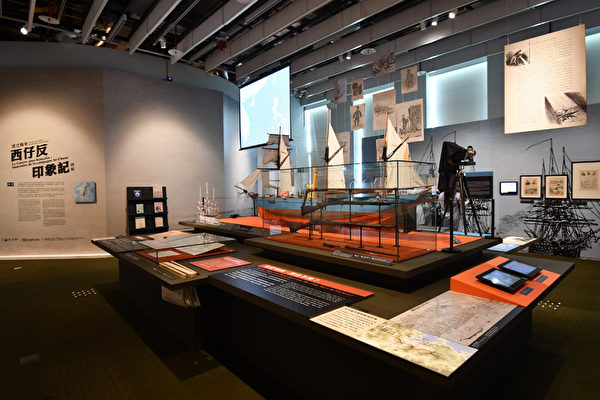The National Taiwan Museum of History has launched the “Exhibition of the Sino-French War” starting on the 25th, showcasing a significant ancient artifact – the manuscript map of the French expedition to Formosa.
140 years ago, due to a dispute over the diplomatic status of Vietnam, the French government and the Qing Dynasty drew in Taiwan, causing not only Keelung, Tamsui, and the Penghu Islands to become battlefields one after another, but the entire island of Taiwan faced an economic crisis of trade blockade. This prolonged war, known as the “Sino-French War” in Taiwan, was referred to by the Taiwanese as “Xīzǎi fǎn,” with “Xīzǎi” referring to France.
In the face of this turning point in Taiwan’s foreign relations, the exhibition gathers research results from over a decade on local society, focusing on how Taiwanese society organized and mobilized under the pressure of a formidable enemy, uniting to resist aggression. It also reinterprets the photographic images, battlefield documentation, and letters left by the French army to reconstruct the dynamic reality of the battlefield.
After the war, the emergence of publications in France and Taiwan’s unique ways of commemorating, such as plaques, temple decorations, and ceremonies, demonstrate how the war transformed in different forms, leaving its mark in history, folklore, legends, and memory.
In 1884, military conflicts between France and Vietnam became deadlocked with the involvement of the Black Flag Army, leading France to launch military attacks on Keelung, Tamsui, and Penghu in Taiwan, aiming to use Taiwan as leverage in negotiations to force Qing forces out of Vietnam.
The French military operations around Taiwan can be divided into four stages: the formation of the French Far East fleet, opening fire and occupying Keelung and Tamsui, blocking the Taiwan Strait to intercept and harass coastal vessels, and advancing to occupy Penghu as an excuse to withdraw from Keelung.
The cause of this war had nothing to do with Taiwan, yet Taiwan was inexplicably drawn into the conflict, ultimately becoming the key pawn in the outcome, highlighting the absurdity of the war’s nature.
Faced with the challenge of the Sino-French War, Taiwan’s military mobilization on the battlefield involved not only the dispatch of the Hunan and Huai armies to Taiwan but also the participation of local militia. Confronted with foreign aggression, the local people rallied a sense of community, armed themselves, and supported the battlefield, with key leaders including Lin Chaodong, Zhang Licheng, and Jiang Shaoji.
Even today, temples in places like Keelung and Tamsui bear witness to legends of divine assistance in battle through Cham pottery, murals, and inscriptions. The rituals of worshiping the souls of the deceased at Tamsui’s “Praying at the Door” and the procession route of Ba Yi Zun Wang from Muzha to Tamsui embody the intertwining of faith, social networks, and collective memories of war.
The documentary photographs by French officer Firmin André Salles provide the first visual record of the war process in Taiwanese history, juxtaposed with the letters of assistant army doctor René Coppin and the manuscript and handwritten map of Eugene Germain Garnot’s important ancient artifact “Expedition of the French to Formosa 1884-1885.” This revisiting sheds light on the intentions of the French Empire’s expansion in East Asia and reveals the harsh realities of the battlefield, including issues of food, disease, and the customs and sentiments of Taiwanese commoners in the late 19th century.
The letters sent back from the battlefield, obituaries published in newspapers, and compilations of marching records in publications reshape the understanding and impression of this war through different forms of memory and representation.

